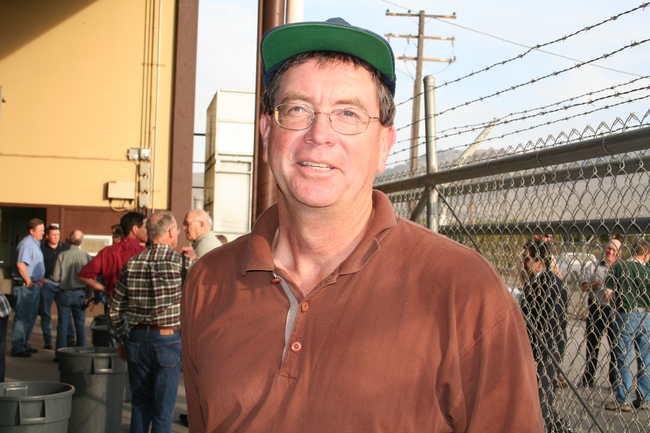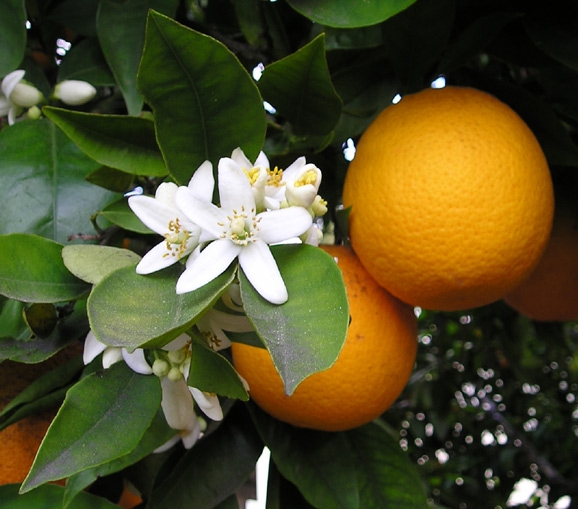
Posts Tagged: Craig Kallsen
Bakersfield stays dry during early October storm
Early this week, rain was in the forecast for Bakersfield, the southernmost city in the Great Central Valley, but UC Cooperative Extension farm advisors were unconcerned, reported John Cox in the Bakersfield Californian.
The rain never materialized, and that was good news for Craig Kallsen, UCCE Kern County citrus and pistachio advisor.
"In general, on the valley floor, if it's raining, somebody's going to get hurt," he said.
Kallsen said the ideal situation for farmers is when rain and snow fall on the mountains, providing water to be harnessed for irrigation. Because of the dry, warm climate in the South Valley, even after it rains, "It's probably going to dry out really rapidly."
UCCE orchard systems advisor Mohammad Yaghmour said rain is a bigger concern in the spring when almonds are in bloom. By this time of year, most almonds have been harvested, largely removing the threat of mold.
"For almonds, luckily, most of the harvest is almost over," he said. "I don't anticipate seeing much effect."
Climate change is impacting California tree crop farms
Rising temperatures appear to be reducing the number of hours tree crops in the San Joaquin Valley are subjected to chill during the winter, a critical factor in producing a profitable yield, reported Ezra David Romero on Valley Public Radio, KVPR-FM.
Pistachios, for example, require temperatures between 32 and 45 degrees for about 700 hours each winter, but for the past four years have had less than 500 chill hours.
UC Davis researcher Hyunok Lee recently published a study about climate change impacts on agriculture in UC Agriculture and Natural Resources' peer-reviewed journal California Agriculture. The study found that winter temperatures are increasing more than any other time of year. Her modeling looks at the year 2050 in Yolo County.
“Our agriculture will continue,” Lee said. “But if you look at . . . like 20 years or 30 years. The pattern may change a little bit, crops may move a little bit north.”
Romero spoke to UC Cooperative Extension farm advisor Craig Kallsen, who holds the UC Cooperative Extension Presidential Chair for Tree Nut Genetics. Kallsen is conducting trials aimed at finding pistachio varieties with novel nut, tree growth and yield characteristics, and varieties that produce a high yield even under low-chill conditions.
"We're trying to use the other species of pistachios actually to see if we can come up with something that has a low chill requirement. It's pretty hypothetical at this stage,” Kallsen told Romero. “We made quite a few crosses this spring and we actually hope to put a trial in a low chill area.”
David Doll, UC Cooperative Extension farm advisor in Merced County, is studying other tactics to improve winter chill, such as using overhead sprinklers to cool the trees and painting them white with liquid clay to reflect sunlight.
"So this is something that could impact a lot of farmers over the next 10, 20, 30 to 40 years,” Doll said. “And in fact it's already impacting farmers on random given years across the state."
Too many California pistachios coming up empty

UC Agriculture and Natural Resources experts said the dip in yield cannot be blamed on the drought, but a warming climate may be coming into play. Pistachios require cold winter temperatures to reset their biological clocks.
“They use the temperature to know when winter is over,” said Craig Kallsen, UC Cooperative Extension advisor in Kern County. “And if they don't get the message, they get confused.”
Male trees then end up blooming after the female tree. If female plants don't get fertilized when they bloom, they still produce shells—just empty ones.
Kallsen said the hardest hit regions are in the Southern San Joaquin Valley.
"We're looking at a record low (yield)," Kallsen said.
Farmers to the north had more chilling hours, so they are seeing a normal or low number of empty pistachio shells.
Growers have found that spraying oil can help trees bloom more uniformly, however, it doesn't always seem to help, the story said.
“There are a lot of things we're still trying to understand,” said Gurreet Brar, UC Cooperative Extension advisor in Fresno County. “Oil applied at the wrong time or in inappropriate conditions like water stress conditions can injure the plant.”
California citrus farmers weather the freeze
It has been particularly cold at night in California for about a week, but it appears the state's citrus industry will emerge mostly unscathed, reported Oliver Renick on Bloomberg.com.

Thermometers dipped about 10 degrees below normal overnight during the cold snap, but growers efforts to keep the trees warm with wind machines and irrigation appear to have been successful.
"We are not anticipating any damage in the navels, maybe very limited damage on the outer row away from the wind protection,” said Shirley Batchman, the director of government affairs at California Citrus Mutual. “Certainly nothing that’s going to affect the orange production.”

